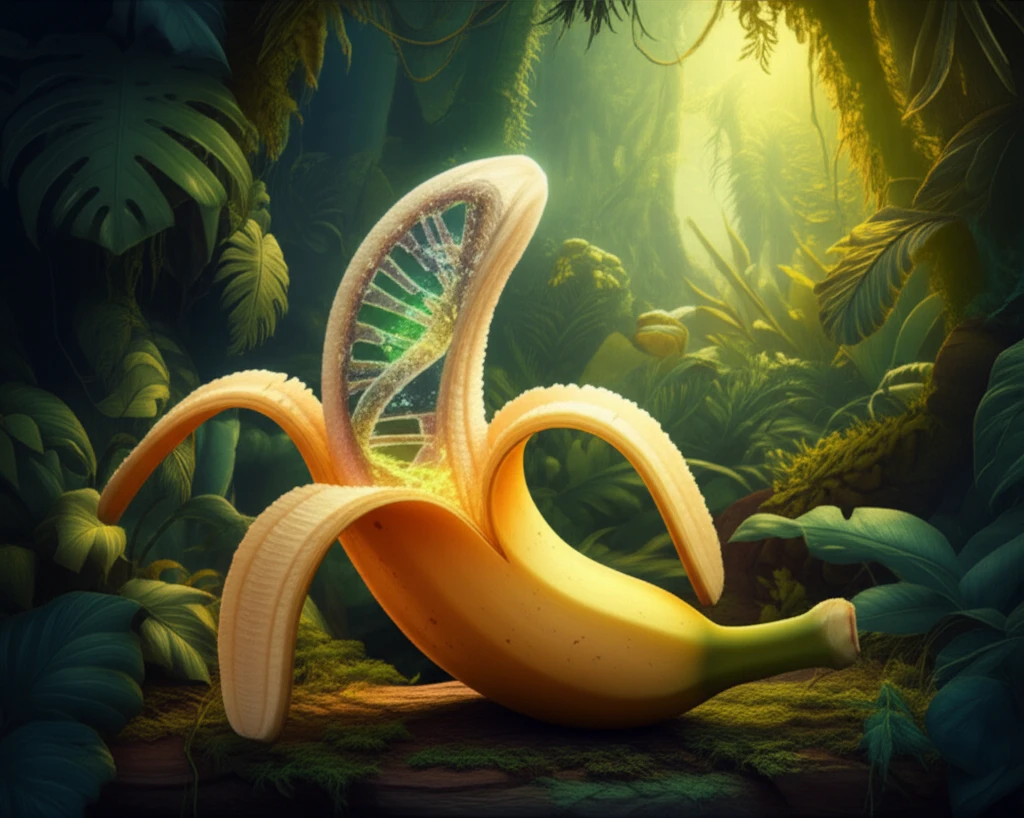
Decoding the Chloroplast Genome: What Banana DNA Reveals About Crop Origins
"New research into the Musa balbisiana chloroplast genome sheds light on banana evolution, crop diversity, and the future of cultivated varieties."
For centuries, bananas have been a global staple, enjoyed in countless forms worldwide. But behind the familiar fruit lies a complex history of domestication and evolution. Now, cutting-edge research is peeling back the layers of the banana's genetic code, revealing clues about its origins and potential for future cultivation.
A recent study focuses on the chloroplast genome of Musa balbisiana, a wild ancestor of many cultivated banana varieties. Chloroplasts, the tiny power plants within plant cells, contain their own DNA, inherited maternally, making them valuable tools for tracing plant lineages. By sequencing and analyzing this DNA, scientists gain a deeper understanding of how bananas have evolved and diversified.
This article will explore the key findings of this research, highlighting the significance of chloroplast genome sequencing in understanding crop evolution and identifying strategies for improving banana cultivation. Get ready to delve into the world of plant genetics and uncover the secrets hidden within the banana's DNA.
Unlocking Banana History: The Power of Chloroplast DNA

The study meticulously sequenced the complete chloroplast genome of Musa balbisiana, revealing a structure of 169,503 base pairs. This genome exhibits a typical quadripartite organization, featuring a large single-copy (LSC) region and a small single-copy (SSC) region, interspersed between inverted repeat (IR) regions. Overall, the Musa balbisiana's gene content, size, and order matched with that of M. acuminata Colla.
- Evolutionary Relationships: Understanding how closely related different banana species are.
- IR-SSC Dynamics: Variations at the IRb-SSC junction indicates on-going infra-generic fluctuations in the Musaceae family.
- Maternal Lineage: Tracing the maternal origins of cultivated bananas.
- Genome Organization: Detailing the specific arrangements of genes within the chloroplast.
Planting the Seeds for Future Banana Research
This study opens exciting new avenues for banana research and crop improvement. By understanding the genetic makeup of wild banana species, scientists can identify valuable traits like disease resistance or drought tolerance that could be bred into cultivated varieties. This knowledge could help develop more resilient and sustainable banana crops, ensuring a stable supply of this important food source for generations to come. As the research evolves scientists could also analyse other plant cells, study plant biodiversity, discover genetic variation and understand better plant breeding.
